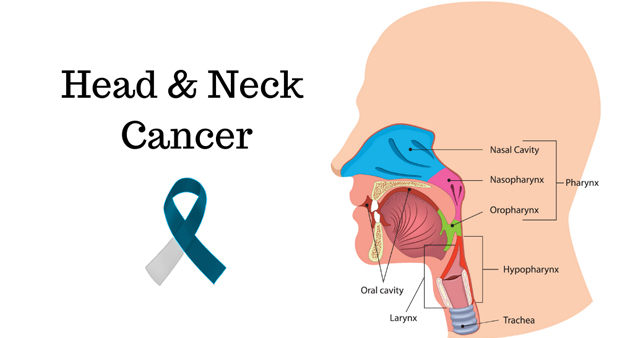Head and Neck Cancers
01/06/2023 posted by Admin Dr. Nirdhum Shikha
Head and Neck Cancers are the most common cancers in developing countries. Head and neck cancers in India accounted for 30% of all cancers in males. In females, they constitute 11 to 16% of all sites of cancers. About 200,000, Head and Neck Squamous Cell Cancer (HNSCC)is diagnosed with Oral Cancer up to 40%.
Incidence- variability in incidence and pattern of head and neck cancer is due to regional differences in the prevalence of risk factors. The world’s highest incidence of cancers associated with tobacco is found in districts of the northeast, central and southern parts of our country.
Etiology- Most head and neck cancer cases are due to individual predispositions linked to certain genetic characteristics, and exposure to carcinogens caused by lifestyle behaviors. In addition, exposure to two or more of the following risk factors has a synergistic effect.

- Tobacco-Between 15 and 49 years of age around 57% of all men and 11% of women in India, use some form of tobacco in smoking form or smokeless form.
- Alcohol- Alcohol consumption is associated with an increased risk for oral cancer, and is dose-dependent. The risk for oral cavity cancer is 2- to 3-fold higher than among non-drinkers with regular consumption of 4 to 5 drinks daily.
- Alcohol in combination with smoking: The risk for oral cancer increases by elevenfold when alcohol is taken along with the intake of tobacco.
- Human papillomavirus (HPV) may be linked with some oropharyngeal and oral cancers. HPV-16 has been detected in up to 22% and HPV-18 has been found in up to 14% of oral cancers cases.
- Iron deficiency anaemia in addition to dysphagia and postcricoid webs (Plummer-Vinson syndrome) is associated with a high risk for the development of carcinoma of the oropharynx and esophagus and oral cavity.
- Oral precancerous conditions like leukoplakia, Erythroplakia, and submucosal fibrosis are considered an important factor in the increasing incidence of oral cancers in individuals 35 years and below in India.
- Skin cancers of scalp, face and neck are more common in people who are more exposed to sunlight.
The symptoms of Head and Neck Cancers may include a non-healing ulcer in the mouth, decreased mouth opening, bleeding from the nose/ mouth, sore throat/pain that does not go away, difficulty in swallowing, and a change or hoarseness in the voice, neck lump/mass.
The treatment plan for an individual patient depends on a number of factors- the person’s age and general health, including site of the tumor, the stage of the cancer.
Treatment is mainly with curative intent in early stages or palliative intent in very advanced cases.
Treatment for Head and Neck Cancers can include surgery, radiation therapy, chemotherapy, targeted therapy, or a combination of treatments. Surgery is the mainstay treatment option for most followed by adjuvant treatment either by radiation therapy or chemo-radiation.
Recent advances in the form of plastic reconstructive and microvascular surgeries help patients to minimize the facial disfigurement.
For Pharyngeal and Laryngeal Cancers organ preservation management is preferred in the form of radiation or chemo-radiation.
The earlier the treatment, the outcome is better and disease-free survival is longer. If cancer is being diagnosed in the first stage, chances of survival are almost around 90-100%. But the same decreases with an increased or advanced stage of the disease to around less than 40-50%.
Post-treatment patients are recalled for regular follow-up, monthly for the first year, and from the next year the follow up duration increases.
By Dr. Nirdhum Shikha
M.D.S (Oral and Maxillofacial Surgery)
Fellow in Head and Neck Surgical Oncology
Consultant in Head and Neck
Surgical Oncology
View More Blogs By Us